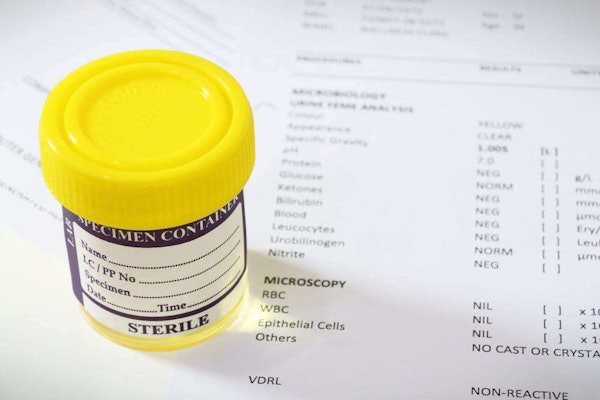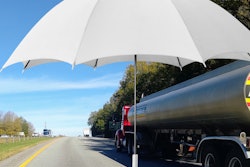An expert support team and time-tested equipment have helped Dale Earnhardt Jr. stay at the top of his game in restrictor plate racing.
Superspeedway Superstars
Good thing the NASCAR Nextel Cup Series throws in a few road course and short tracks with its superspeedways. Otherwise, the tandem of Dale Earnhardt Jr. and Michael Waltrip might just spend year after year settling the points title between themselves.
The pair – teammates at DEI Incorporated – has been dominant at the biggest tracks on the circuit (Daytona and Talladega).
“It isn’t any secret about Richie Gilmore’s success at Daytona,” says Earnhardt, talking up the support team that has made him the new king of restrictor-plate competition. “He’s won five Daytona 500s now with different people. He’s just always been able to go to Daytona and make a good motor. He builds good motors everywhere, but Daytona is really where he shines.”
The DEI team joined the RAD program with Richard Childress and got to share in the hard-won knowledge Childress and his team had developed.
“We incorporated so many fabricators into our program,” Earnhardt says. “One year we’d have five fabricators. The next year we’d have 10. And now they have their own department. It’s just a madhouse over there. Every year you need more fabricators. You can’t just plug anybody into that department. They have to have knowledge and understanding. Every guy has got to know that every piece that he makes is critical and how to make it the best you can.”

The junior Earnhardt also relies on expertise developed for his father’s superspeedway runs.
“Tony (Eury) Sr. and Tony Jr. have always built fast speedway cars,” Earnhardt says. “Tony won five in a row with Dad in the Busch Series at Daytona. They learned as they went and applied what they learned every chance they got. That car we built when we were rookies and went down there (Daytona) really wasn’t that great. But Michael took that same car and won with it last year at Talladega. It just takes time to build on something and improve it and keep working on it. Eventually, when you have all the right people, you’ll figure it out.”
Earnhardt has definitely figured it out. And he also understands the changing landscape of stock car racing.
“Used to, in a stock car race, half the field would be made up of drivers from North Carolina. Now there are only about three,” Earhnhardt says. “You’ve got guys from California and all over, and suddenly the sport is a big international deal.
“I can’t see anything negative about it. People root for you now not because of where you’re from, but because they like you. That helps you, that helps your sponsor, and it just gives racing more appeal all the way around.”
Waltrip, meanwhile, relishes the challenges of Daytona and Talladega.
“The chances of getting in a wreck at most tracks are slim, while at Talladega it’s 50-50 or maybe 60-40,” he says. “But I still like racing here because if you can run up front, then chances are you won’t be caught up in the wreck.
“I don’t know why some drivers are skittish about coming to Talladega. But the way I look at it, it’s not a restrictor plate problem – we cause the wrecks. I’m not going to worry about it at Talladega or Daytona.”
Since winning the Daytona 500 in 2001, Waltrip has become competitive at every stop on the 36-race schedule. Still, it’s the big round venues that he looks forward to most.
“I’ve always enjoyed restrictor plate racing,” Waltrip says. “I’ve always been competitive here and always feel like I’m going to be able to run up front. The cool thing about Talladega is that an 80-year-old man can qualify a car there – it’s that easy. But then it goes from the easiest place in the world to one of the hardest when you actually start racing. But I love it.
“I think if I’m in the top five or 10 with 10 laps to go, I’ll have a chance to win.”
Ryan Wins Seventh Pikes Peak Race
Mike Ryan and his Freightliner Century Class S/T Super Truck claimed the victory for the seventh time at the 82nd annual Pikes Peak International Hill Climb on June 26. Ryan competed in the big rig division against entries from Peterbilt and Kenworth. This was Ryan’s eighth trip up the mountain in the No. 77 Freightliner Century Class.
The hill climb takes on trucks, rally cars, ATVs and motorcycles competing in separate divisions to achieve the fastest time up the mountain on a course of pavement, gravel and dirt with hairpin turns and sheer drop-offs. The race begins at 9,390 feet and finishes at the 14,110-foot summit of Pikes Peak.
But this year’s finish line for the Class 8 segment of the Pikes Peak International Hill Climb stopped six miles short of the summit due to severe weather conditions that developed in the afternoon, shutting down the race for more than two hours preceding Ryan’s run up the mountain. Only one other time in the history of the hill climb has weather altered the race route.
Although disappointed by not being able to run to the summit, Ryan remained determined. “I don’t care if we only race a mile,” Ryan says. “We came to play, and I’m not going to give up that No. 1 spot.”
Ryan’s race-modified Freightliner Century Class S/T features a racing version of the Mercedes-Benz 501 V-6 twin turbo engine that produces nearly 1,300 horsepower. In tests, the 8,000-pound truck topped out at speeds nearing 100 mph on the course.
Ryan finished the race with a time of 6:05:03, 36 seconds faster than the second-place time. Ryan also broke his own qualifying-time record at this year’s competition by 20 seconds. “Beating a record by five seconds is incredible,” he says. “Twenty seconds is gigantic.”
Ryan credits Freightliner for providing him with a vehicle that stands up to the demands of the Pikes Peak challenge. “Freightliner offers great technology and outstanding engineering,” Ryan says. “I love to race this truck because it gets the job done.”
International Partners with FitzBradshaw Racing
International Truck and Engine is teaming with Super Bowl legend Terry Bradshaw and NASCAR veteran Armando Fitz, co-owners of FitzBradshaw Racing, for the 2004 and 2005 NASCAR seasons. FitzBradshaw Racing chose International 9900i trucks to haul the team’s cars, equipment and gear to races nationwide. The partnership marks the company’s second NASCAR sponsorship – International also is the Official Class 8 Tractor of NASCAR.
Terry Bradshaw will make special appearances at International events throughout the year.
Big Rig Racing
Three years ago, it seemed like a long shot – big rigs racing on road courses across North America.
Sure, so-called Super Trucks had found a niche in Europe, but so had soccer – a sport that still struggles in the lower 48.
But when the Super Truck Racing Association of North America (STRANA) said it was serious about become a legitimate sport, it wasn’t kidding.
Now, in 2004, the sport continues to grow, highlighted by a “celebrity racing challenge” each year and gaining more credibility at every stop. Once a novelty, Super Trucks are set to join other series as a form of motorsport folks will pay to see.
Known as the Tonka Super Truck Racing Series, it is in its third full season, providing support events for the American Le Mans Series.
In 2003, three Tonka Super Truck Celebrity Challenge exhibition races were part of the ALMS events at Road America in Elkhart Lake, Wis., and Petit Le Mans at Road Atlanta.
STRANA’s schedule this year is a summer and fall format and includes stops at Infineon Raceway, Sonoma, Calif., (July 16-18); Portland International Raceway, Portland, Ore., (July 23-25); Mosport International Raceway, Bowmanville, Ontario, Canada (August 6-8); Road America (Elkhart Lake, Wis., (August 20-22); Road Atlanta, Atlanta (September 23-25); and Mazda Raceway Laguna Seca, Monterey, Calif. (October 15-16).
The celebrity races include drivers from ALMS, NASCAR and Indy Car racing the Super Trucks with prize money going to various charities. ESPN will once again provide event coverage.
The Tonka Super Truck Racing Series is governed by STRANA, which was founded in March 2001 and conducted its first test sessions three months later at Las Vegas Motor Speedway. Tonka showcases Class 8 tractors running, spinning and passing on road courses throughout the United States and Canada. Modeled after the popular European Truck Racing Series, it is both competitive sport and marketing tool for the trucking industry.
By August 2001, STRANA reached a sanctioning agreement with the International Motor Sports Association (IMSA), which gave the fledgling series instant credibility.
ArvinMeritor provides the driveline and axle components, Haldex supplies brake systems, and Elan Motorsports Technologies Group, based out of Atlanta, will manufacture and spec rolling chassis and provide technical support to the series and its teams.








